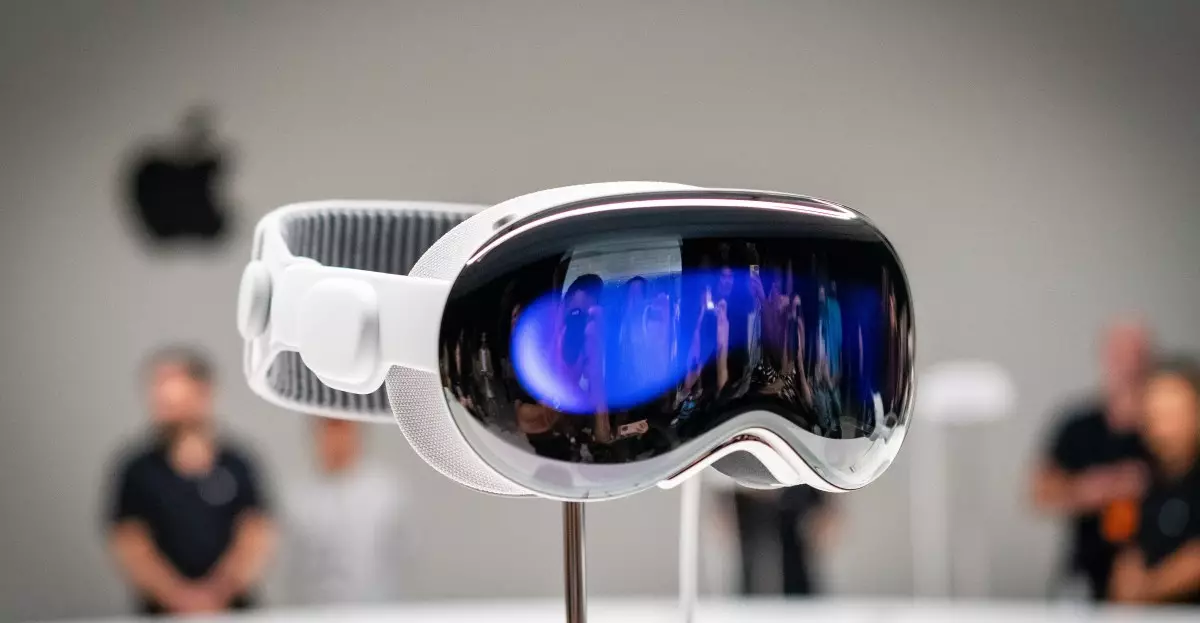The recent lawsuit filed by Apple exposes a dramatic clash over proprietary technology and intellectual property in the tech industry. At its core, the case centers on a former employee, Di Liu, who is accused of illicitly downloading thousands of sensitive documents related to Apple’s groundbreaking Vision Pro headset before transitioning to a prominent role at Snap. This situation underscores the high-value, high-stakes nature of innovation within major tech companies, where the theft of a single idea or set of designs can have far-reaching consequences.
Apple’s accusations paint Liu as a calculated actor who deliberately misused access to internal systems to transfer confidential information onto his personal cloud storage. The lawsuit claims that Liu’s actions included not only downloading vast amounts of data but also actively concealing his activities by reorganizing files and deleting evidence from his company-issued device. Such behavior signals a clear intent to undermine the company’s competitive advantage, and the fact that Liu falsely claimed he was leaving for health reasons adds a layer of deception that magnifies the severity of his actions.
This case is emblematic of the larger problem facing technology giants today—how to secure their most valuable assets when employees with privileged access decide to jump ship. It raises disturbing questions about the effectiveness of current security protocols and the ethical responsibilities of engineers and designers entrusted with sensitive information. While Apple has yet to specify exactly which pieces of the stolen data might be in use at Snap, the overlap between Liu’s stolen files and Snap’s AR Spectacles product strongly suggests potential misuse of proprietary information.
Corporate Espionage: The Hidden Cost of Talent Mobility
The tension between fostering a flexible workforce and safeguarding trade secrets is at the center of this controversy. As tech companies compete fiercely for innovation supremacy, they often find themselves vulnerable when employees move to rivals, armed with knowledge acquired during their previous employment. Apple’s lawsuit—a rare move in the industry—reflects an awareness that intellectual theft can nullify years of research and development, costing billions in lost innovation.
Moreover, Apple’s insistence on pursuing damages highlights how serious it views the potential breach. Proprietary information about Vision Pro, a product likely involving substantial investment, is a strategic asset critical to Apple’s future. The leaked data, if used by competitors such as Snap, could significantly undermine their market position, making this legal fight more than a simple employment dispute; it’s a battle over competitive advantage in a technology-driven economy.
The fact that Apple is not explicitly naming Snap as a defendant indicates complexities in litigation strategy or perhaps an underlying concern about maintaining a clean narrative. Nonetheless, the explicit focus remains on Liu’s conduct, emphasizing individual culpability over corporate complicity. This approach suggests that Apple aims to send a strong message to all levels of its workforce about the consequences of unethical behavior and the importance of internal security.
The Broader Implications: A Wake-Up Call for Innovation Security
This ongoing saga serves as a stern reminder to tech industry leaders: securing intellectual property is an ongoing, multifaceted challenge. Companies must go beyond traditional security measures and incorporate behavioral analytics, forensics, and strict access controls to prevent trusted employees from becoming insider threats. As the boundaries between employment and entrepreneurship blur, the risks of knowledge siphoning escalate.
Furthermore, the legal ramifications extend beyond individual cases. They shape industry-wide policies and influence how companies craft employment agreements and confidentiality clauses. The emphasis on returning stolen data and pursuing damages not only aims to punish but also dissuade future misconduct, reinforcing a culture of accountability.
This case also probes societal questions about the ethics of talent mobility. Is it inevitable that innovation will be compromised when employees switch allegiances? Or can stricter oversight and innovative data protection techniques mitigate these risks? Apple’s aggressive legal stance suggests a belief that such misconduct should be met with severe consequences, fostering a climate where safeguarding intellectual property remains a top priority.
In the end, Apple’s lawsuit is more than a scandal—it’s a bold declaration about the value of proprietary information in the digital age. As technology continues to evolve at a breakneck pace, so too must the strategies for protecting the assets that fuel innovation. The lessons from this case extend far beyond Apple and Liu, serving as a warning and a call to fortify defenses against the ever-present threat of corporate espionage.

